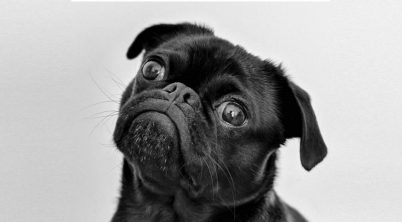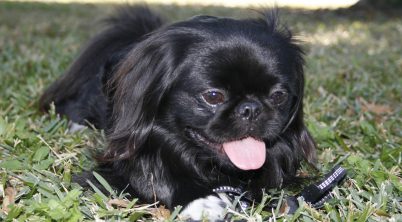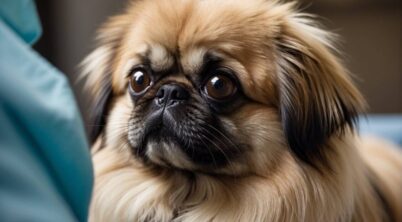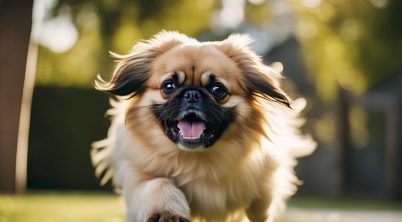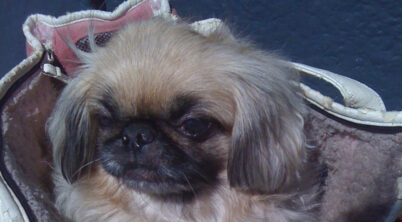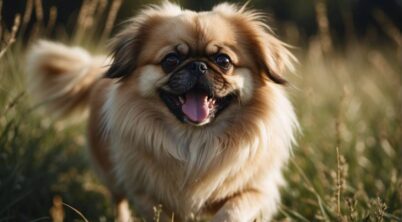Table of Contents
Pekingese Agility Training: Boosting Your Pet’s Performance and Confidence
The Pekingese, a toy breed with ancient roots tracing back to the Tang Dynasty in China, may not be the first to come to mind when one thinks of agility dogs. These small dogs were once companions to Chinese royalty, revered for their lion-like appearance and demeanor. Despite their regal and somewhat aloof reputation, Pekingese possess a surprising agility capability that dog enthusiasts are beginning to recognize and celebrate.
Dog agility is a competitive sport designed to test a dog’s speed, dexterity, and the handler’s ability to direct their dog through a complex obstacle course. While traditionally favored by more athletic breeds, Pekingese are proving they can navigate through tunnels, weave poles, and jumps with the same determination and enthusiasm as their larger counterparts. The bond between the Pekingese and their handlers is integral to their success, with the close communication and understanding between the two being crucial for navigating the courses effectively.
As agility becomes a more inclusive sport, allowing for a diverse array of breeds to participate, Pekingese enthusiasts are encouraging others to explore this activity with their pets. The sport provides an excellent opportunity for these small dogs to demonstrate their intelligence and agility while strengthening their bond with their handlers. This ancient breed’s participation in agility challenges common perceptions and showcases the versatility and adaptability of the Pekingese.
Pekingese Agility
Pekingese dogs, known for their lion-like mane and regal demeanor, are not typically associated with agility. Despite their small stature and distinct physical build, they possess the capability to participate in agility sports. Agility courses challenge dogs with a variety of obstacles; Pekingese can navigate these with guidance from their handlers.
Training & Skills:
- Patience: Essential for teaching Pekingese, as they may require more time to master agility tasks.
- Consistency: Regular practice helps these dogs gain proficiency and confidence on the course.
- Positive Reinforcement: Treats and praise encourage Pekingese during their agility training.
Common Agility Obstacles:
| Obstacle | Description |
|---|---|
| Tunnels | Pekingese crawl through tubes. |
| Weave Poles | They weave in and out of a row of stakes. |
| Tire Jumps | These dogs leap through suspended hoops. |
| Seesaws | They balance and walk over tilting planks. |
| Pause Tables | Pekingese halt on platforms for a fixed time. |
Results attained by Pekingese in agility, such as the achievements of “Della Rae,” indicate their potential when properly motivated and trained. The sport fosters a strong bond between the dog and their owner—essential for navigating courses effectively.
Though not the quickest breed, the Pekingese’s determination and ability to learn complex sequences underscore their agility aptitude. Success in agility with a Pekingese hinges on adapting training methods to suit their pace and celebrating their milestones, underscoring the sport’s accessibility for all breeds.
The Pekingese and Physical Activity
Pekingese dogs may appear delicate, but they require regular exercise and mental stimulation to lead healthy, happy lives. A well-structured agility training can be an excellent way to meet these needs.
Exercise Requirements
- Daily Exercise: The Pekingese needs daily physical activity to prevent obesity, which they are prone to due to their small stature and propensity for weight gain.
- Mental Stimulation: Agility training provides the Pekingese with not only physical exercise but also mental stimulation, helping to fend off small dog syndrome—behavioral issues arising from a lack of stimulation.
- Safe Activities: Due to their relatively short legs and long backs, care must be taken with high-impact activities. Exercise options include:
- Jogging: Short, leisurely jogs alongside their owner.
- Swimming: If introduced properly, swimming can be a low-impact way to help maintain their health.
Agility Training Benefits
- Building Bonds: Through agility training, Pekingese dogs can strengthen their bond with their owners, learning commands and following guidance on the course.
- Training for Health: This activity promotes cardiovascular health, muscle development, and endurance.
- Avoiding Health Issues: Regular agility training can help prevent common health problems by keeping Pekingese dogs fit and active.
Agility Training Fundamentals
Agility training for Pekingese combines obedience with physical prowess, building a trusting relationship and mutual respect between handler and dog. It requires patience, consistency, and positive reinforcement.
Starting with Basic Obedience
Before introducing a Pekingese to agility equipment, one must ensure the dog has a strong foundation in basic obedience. This typically includes commands such as sit, stay, come, and heel. Positive reinforcement is crucial — rewarding the puppy with treats and praise to reinforce good behavior. Obedience establishes a bond and paves the way for more complex agility drills. Developing these skills early, especially in puppy training, sets the groundwork for success.
Progressing to Agility Drills
Once a Pekingese masters basic obedience, they can progress to specialized agility training. This involves navigating a variety of obstacles, from jumps to tunnels. Training should be approached with patience, as it can be mentally and physically taxing for the dog. Handlers should offer consistent rewards and treats to motivate and encourage their Pekingese, thereby utilizing positive reinforcement. It’s crucial to remember that agility is not just a physical activity — it also taps into the breed’s intelligence and athletic capabilities. Through regular training, a Pekingese and their handler can develop a strong team dynamic, crucial for agility success.
Competing with a Pekingese
Participating in agility competitions with a Pekingese challenges common misconceptions and showcases the capabilities of this toy breed. This section provides insights on handling agility trials and fostering a spirit of sportsmanship and teamwork between handler and dog.
Navigating AKC Agility Trials
The American Kennel Club (AKC) hosts agility trials where Pekingese can demonstrate their dexterity and speed. To compete, one must register their Pekingese with the AKC and adhere to specific regulations and classes for competition. Trials comprise various obstacles such as jumps, tunnels, and weave poles. As the Pekingese completes the course, judges evaluate their performance based on standards including accuracy and time. Achieving success in these trials can lead to multiple titles for the Pekingese, which attest to their agility prowess and training.
Cultivating Sportsmanship and Teamwork
In the realm of agility, sportsmanship transcends competitive spirit; it ensures respect towards other competitors, judges, and the integrity of the sport. Handlers must display courteous conduct, whether their Pekingese wins or loses. The essence of competition lies in the strong bond and synchronization between the handler and their Pekingese—forming an effective team is crucial. Regular training and participation in obedience trials and rally trials can also enhance this connection, leading to improved performance in agility events.

